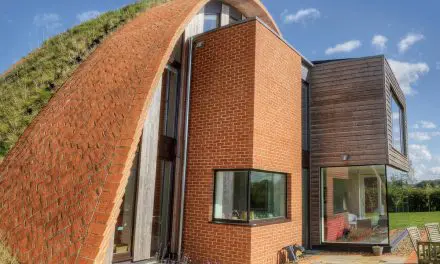NOTE: We are a participant in the Amazon Services LLC Associates Program, an affiliate advertising program designed to provide a means for us to earn fees by linking to Amazon.com and affiliated sites.
by Sheridan Foster
Remember when you were a kid and your parents were constantly telling you to turn off the lights when you left the room, but you almost always forgot to? Say hello to new home technologies that do it for you. Home automation (aka “smart home”) technology that controls indoor temperatures, lighting, irrigation, and more is popping up all over the place as a convenient and more environmentally sound way to run your home. Today we’re featuring 10 amazing products for eco-friendly home automation to boost your eco-home’s IQ.
Many high-tech homeowners are turning to these solutions as a way to help the environment and cut utility bills. With user-friendly options, though, you don’t have to be too techy to take advantage of home automation. U.S. households spend $1945 on average for home energy each year. But you can slash your energy usage by incorporating automated devices into your home. Although some of these gadgets are a tad expensive, do the math and you’ll see a fairly quick return on investment.
Hubs/controllers
Most of the the devices in the following sections will have their own app or control device. A more elegant solution is to use a hub which can be your overall control center for other smart home devices. Having a central management system that works directly with all of your appliances through Wifi, Bluetooth, or other wireless networks is super handy. Think of it as a way to streamline your home automation process with a single tool.
We like:
The smart speaker takes voice commands and answers all of your questions, using the Alexa Voice Service. Most useful of all, it connects to your home automation devices so all you have to do is say something like, “Alexa, turn off the lights in the basement.” About as easy as it gets, right? As of now, Amazon still holds the lead in family of devices, integration with other manufacturers, and voice command accuracy.
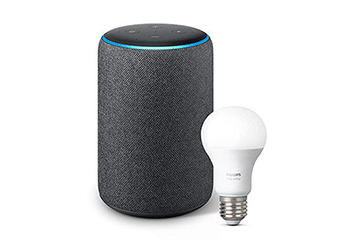

Later to the game than Alexa, but fast improving is Google Home. Backed by the strength of Google search, Google Home performs better than its competitors on random queries. It also controls an ever growing list of third party devices such as thermostats, lights, etc. and through partnerships with major electronics manufacturers, one can expect it to integrate with offerings from Sony, JBL, Philips, Viszio, Toshiba, and more.
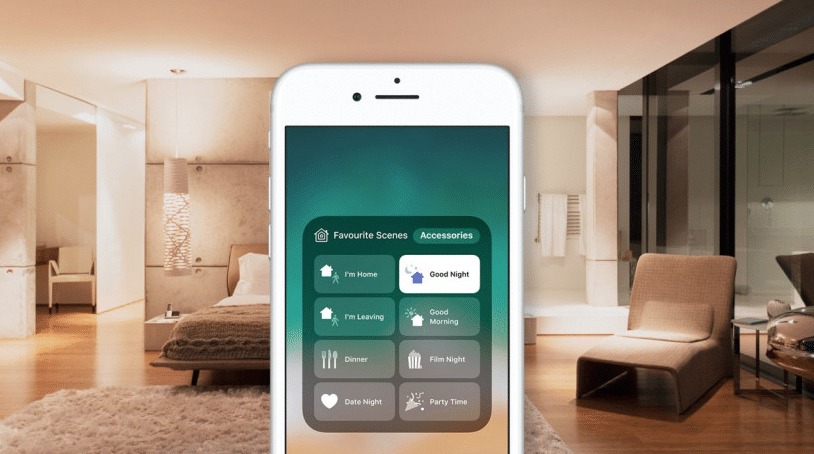
Apple allows you to turn your iPhone or iPad into a universal remote through their HomeKit. HomeKit has been around for many years, but has had a closed ecosystem which has hampered adoption. HomePod is their answer to a voice control speaker. It is also getting easier, but not for the faint of heart, to add new devices to the application. Once integrated, it is the ultimate in convenience.

Intuitive thermostats
Heating and cooling is responsible for nearly 50% of the energy use in an average U.S. home. Imagine, though, an apparatus that will self-program to your schedule, take the weather into account, have the ability to heat/cool specific rooms via voice command, and so on. Well, you don’t have to imagine it, because this technology is already on the market and ready for you to take advantage of it. These sophisticated thermostats can make a huge dent in your utility bill and help your HVAC system become less of an energy hog.
We like:
This circular, stylish thermostat learns your schedule during its first week in your home and will turn up or down based on your usual activities. Plus, it tracks your energy usage each day and every month, showing when and how you can use less.
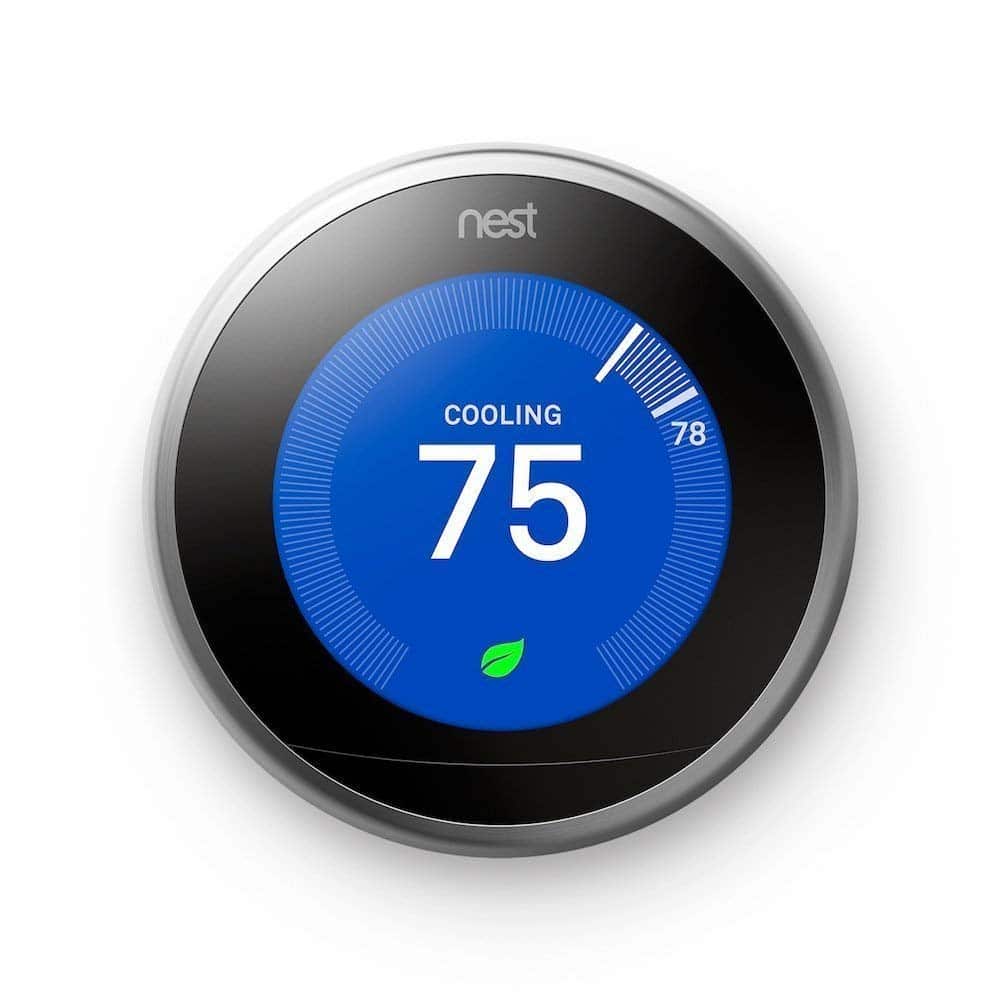
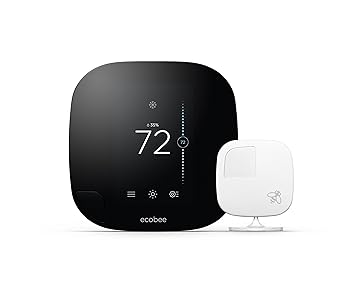
This model uses sensors that are placed around the home so it knows where the warm and cool spots are, and adjusts accordingly. You can control it with your computer, smart phone or Amazon’s Echo. Unlike Nest, it is adaptable to a variety of HVAC systems, including ones without a C-Wire.
Smart Strips & Power Adapters
Power adapters and power strips are responsible for the energy that flows to our devices, so it makes sense that they should be efficient, too. “Vampire power drain” (otherwise known as an idle current) from appliances that appear to be off but are still sucking energy, is a significant source of energy loss in our homes. This is an easy fix, though, with smart adapters and strips that sense when to shut off the current completely.
We like:
Now you can control each individual outlet via schedule, on an app, or via Amazon Echo and Google Home. With four outlets and four USB ports this lets you turn lights, devices, appliances off when you are not around, and turn them on before you arrive home. If you don’t need the integrated control of Amazon Echo or Google Home, that’s OK, because it is WiFi enabled to work with an app on phone or tablet.


This inexpensive automatic switching surge suppressor helps you save energy on computer peripherals while giving your computers power surge protection. It keeps computer extras, like printers and scanners, from drawing energy during standby mode through its intelligent circuitry. No more forgetting to turn off all of your energy-sucking devices, because this power strip does it for you.
Automated Lighting
Lights are pretty essential to our homes, and we’ve come a long way in our efforts to be more energy efficient, from incandescent bulbs to CFLs to LEDs. Lighting our homes still accounts for 10% of total residential electricity consumption in the U.S. However, lighting is a big focus in home automation systems and you can integrate it into your home, too. These cutting edge systems can be set on a schedule, change brightness and hue, and even cast themed color palettes for every mood.
We like:
This personal wireless lighting company really seems to have it all. Using their phone app, you can control the lights in any room, set light schedules, and create all sorts of lighting color palettes and moods. They have motion detector lighting as well, plus basic white, white ambience, and color ambience bulbs to choose from.
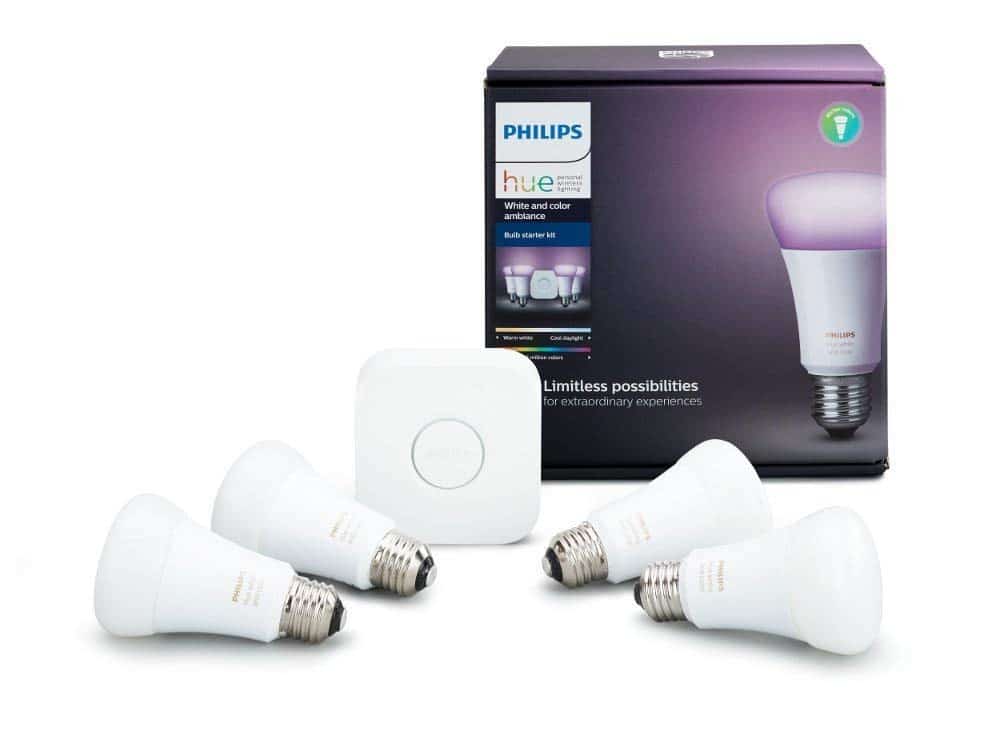

These color changing bulbs give more light for less energy with great looking colors. This product doesn’t need a central hub since it functions with Wifi, which is definitely a plus. You can even get products with infrared for night vision! This latest products have been upgraded to work with Amazon Echo, Google Home, or Apple HomeKit.
Irrigation
Up to half of the water we use outdoors is wasted due to poor watering methods, the EPA reports. Installing an intelligent sprinkler system is a more sustainable upgrade to lawn management that will curb water waste (but allow you to keep that immaculate yard). With features that integrate current weather and different soil zones, you’ll definitely want to ditch your old sprinkler.

Rachio Smart Sprinkler Controller
As an EPA WaterSense-certified irrigation system, you know this is a good choice for water savings. It takes into account yard characteristics, like sun exposure, and is connected to weather stations to avoid watering in less than perfect conditions. It’s available in 8 and 16-zone models so each part of the yard gets a customized amount of water.
We like:
Blossom Smart Watering Controller
Blossom uses cloud data to adjust water use to the current weather. So you scheduled it to water this afternoon, but now it’s raining? No problem, Blossom knows not to overwater. This indoor/outdoor device has up to 12 zones, so parts of your yard that need more or less TLC will get just that.

Home automation is something we can expect to see more and more, and not just in swanky, high-tech homes. Those of you seeking planet-friendly home improvements via modern solutions will be happy to hear the sky’s the limit here (we didn’t even get to the smart fridges or customizable washing machines from LG SmartThinQ)! And, in the not so distant future, individual automations are expected to collide into one big ‘Internet of Things.’ “The Internet of Things is a tech trend that anticipates the integration of technology into everyday items you wouldn’t normally think would or could be automated,” writes Lindsay Rothfeld. “Indeed, companies like Samsung, LG and Sony envision a future where products in your home — from alarm clocks to washer dryers — will talk to one another and naturally work in tandem, where your TV screens and windows sense your movement, and adjust accordingly, where music seamlessly jumps from your headphones to your stereo system. In just a few years, that old shack of yours will truly be all grown up.”
Explore home automation products on Elemental Green
- Nanoleaf‘s ultra-efficient LED lighting line includes options that mimic sunlight in the morning, ones that respond to your voice, and another that combines the features.
- Waterhawk is a showerhead that clearly displays both temperature and your real-time water use in gallons, on a colorful, round LED panel embedded in the face of the fixture.
- Neurio is a smart energy monitor that gives you real-time monitoring to see where energy is being used, allows you to compare your home energy use to others, track your appliance usage, and more.
- Nest, featured above, Nest is a learning thermostat and it’s the only one that’s achieved Energy Star status from the EPA.




![10 Steps Toward a Zero Energy Home [Infographic]](https://elemental.green/wp-content/uploads/2016/04/cbfb-440x264.jpg)

